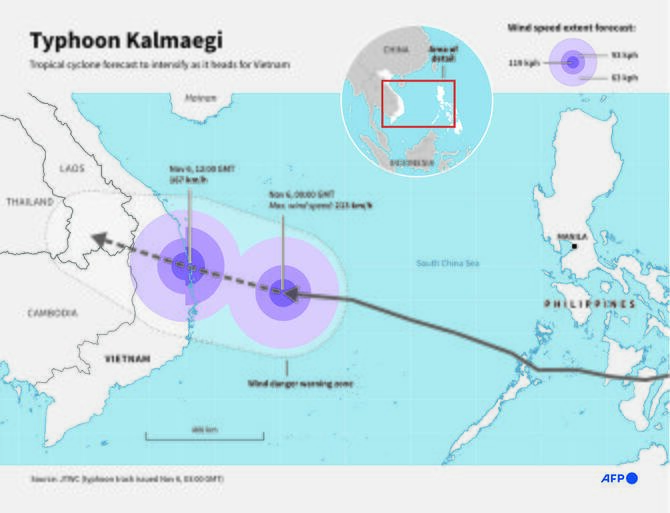
As Typhoons Wreak Havoc in Southeast Asia, Scientists Link Rising Temperatures to the Increase in Extreme Weather Events
With global temperatures on the rise, extreme weather events such as powerful typhoons are becoming more frequent and intense in Southeast Asia.
SINGAPORE: As the year's deadliest typhoon, Kalmaegi, sweeps into Vietnam after causing widespread destruction in the Philippines earlier this week, scientists have linked the increasing severity of such events to global warming.
The failure of world leaders to control greenhouse gas emissions has led to elevated sea surface temperatures that fuel the intensification and wetness of storms like Kalmaegi.
According to researchers from institutions including the Grantham Institute on Climate Change and Environment in London, warmer sea surface temperatures accelerate the evaporation process, leading to more powerful tropical cyclones.
While climate change does not directly imply a rise in typhoon frequency, it significantly increases their intensity, with heavier precipitation and stronger winds becoming more likely in a warming world.
The impact of back-to-back storms, such as those experienced in Southeast Asia recently, can lead to more substantial damage than the effects of individual storms due to saturated soils, filled rivers, and weakened infrastructure.
Furthermore, the trajectory and formation areas of typhoons may expand, posing an increased threat to a wider range of coastal regions, including low-lying areas susceptible to storm surges and rising sea levels.
The recent accumulation of extreme weather events in Southeast Asia, including six deadly typhoons hitting the Philippines within a month last year, indicates an emerging pattern of more frequent and intense storms occurring over shorter timeframes.
This trend serves as a stark reminder of the risks associated with climate change and underscores the need for global action to mitigate its effects.
The failure of world leaders to control greenhouse gas emissions has led to elevated sea surface temperatures that fuel the intensification and wetness of storms like Kalmaegi.
According to researchers from institutions including the Grantham Institute on Climate Change and Environment in London, warmer sea surface temperatures accelerate the evaporation process, leading to more powerful tropical cyclones.
While climate change does not directly imply a rise in typhoon frequency, it significantly increases their intensity, with heavier precipitation and stronger winds becoming more likely in a warming world.
The impact of back-to-back storms, such as those experienced in Southeast Asia recently, can lead to more substantial damage than the effects of individual storms due to saturated soils, filled rivers, and weakened infrastructure.
Furthermore, the trajectory and formation areas of typhoons may expand, posing an increased threat to a wider range of coastal regions, including low-lying areas susceptible to storm surges and rising sea levels.
The recent accumulation of extreme weather events in Southeast Asia, including six deadly typhoons hitting the Philippines within a month last year, indicates an emerging pattern of more frequent and intense storms occurring over shorter timeframes.
This trend serves as a stark reminder of the risks associated with climate change and underscores the need for global action to mitigate its effects.